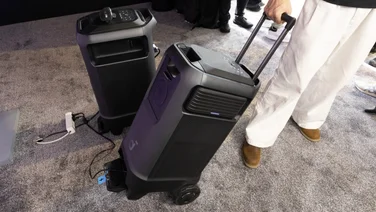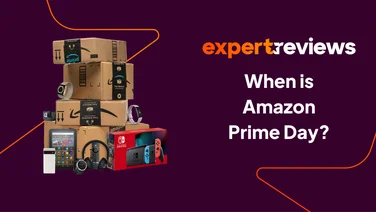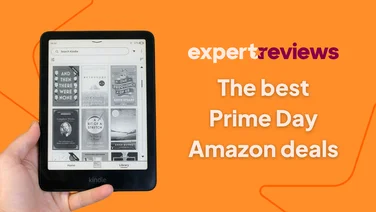To help us provide you with free impartial advice, we may earn a commission if you buy through links on our site. Learn more

Call me the Liquid Glass half empty type but I found Apple’s WWDC 2025 keynote presentation quite underwhelming. Like many others, I was hoping for a sneak peek at the long-rumoured and apparently upcoming ultra-slim iPhone – in answer to Samsung’s recently launched Galaxy S25 Edge – but Apple is still keeping schtum on that one for the time being, it seems.
Even with that disappointment aside, however, the information that we did get over the course of the 90-minute presentation didn’t feel momentous enough to warrant a whole keynote – a few parts of it really felt like they could have been an email, Apple.
So let’s go through the biggest news from the WWDC 2025 keynote and highlight the things that I felt were worthwhile announcements – and what I think could have been missed out.
I liked… The liquid redesign is a solid look
Apple has updated the look of its various operating systems in what it’s calling the biggest design update since iOS 7 dropped all the way back in 2013. That sounds dramatic but, in actuality, your screens will mostly look the same.
The main design element that is new is Liquid Glass – a semi-translucent bubble that refracts light from the background behind it. This look will pop up all over your Apple devices, in the dock on your MacBook, the control centre on your Apple Watch and icons on your iPhone or iPad, for instance. I particularly liked the implementation in Apple TV, where the on-screen controls are now semi-translucent, so they obstruct your content less when you pull them up.

Other new elements include a clock for your lockscreen that dynamically adjusts its size to fit with your background – shrinking if the subject of your background image takes up most of the frame and elongating if the subject is lower down the screen, for instance – and the ability to add a 3D effect to your lockscreen wallpaper.
A few of the major apps have been tweaked, as well. Phone brings your favourites, recent calls and voicemails into one page. Camera has been massively simplified, only showing the Photo and Video modes as standard, with the other options available by swiping left or right. And the Messages allows you to add a custom background to your chats.
I liked… iPhone and Mac deepen their connection
Ok so we’re actually starting this positive out with a mini negative. Apple confirmed what we’d been hearing for a while, that all of its operating systems will be moving to year-based names with their next iterations – so we’ll soon be seeing iOS 26, iPadOS 26, tvOS 26, wearOS 26 and visionOS 26.

It’s a little different for Macs, however. In keeping with the macOS tradition – including the most recent macOS 15 Sequoia – the new macOS 26 is operating under the release name of macOS Tahoe. That throws off the simplicity of the uniform naming convention somewhat – it’s going to be a lot easier for the average consumer to differentiate between iOS 26 and 27 than puzzling out if Tahoe or Sequoia is the newer version.
That minor irritation aside, however, Macs are getting some interesting new features with the Tahoe drop. First and foremost, Apple is expanding the integration between Macs and iPhones, allowing you to access recent calls and your contacts from your desktop, and track actions made on your phone from your MacBook screen – the example given was placing an Uber Eats order on your phone and tracking it via a pop-up at the top of your display.

Spotlight also gets an upgrade here, too, with Apple Intelligence adding some dynamic personalisation to your search results. In addition to your standard searches, the dialogue box can now complete actions like sending emails without having to open a new app and the addition of Quick Keys allows you to create your own shortcuts that jump right to a specific app by entering just two letters.
AI in general – and Apple Intelligence specifically here – has a habit of overcomplicating things (more on that below) so it’s good to see an implementation that actually looks useful and, most importantly, unobtrusive.
I liked… iPads get a pretty substantial update
I think the improvements to iPadOS were my favourite part of the keynote, just because they addressed issues that I’ve had on both Apple and Android tablets. Key to the changes is a new windowing system that gives you impressive flexibility in opening multiple windows, either keeping them floating and adjusting them to the size you need or “flicking” them to the edges to create a split screen.

The flicking feels a bit over-designed for my tastes (what’s so wrong with clicking and dragging?) but the fluidity of the operation impressed me enough that it doesn’t feel like a dealbreaker. If you need more than two windows open, you also have a few tiling options, showing up to four windows in this format at once.
Other important design touches include the addition of a dedicated menu bar at the top of the display – bringing the iPad experience ever closer to its MacBook siblings – and the ability to drag a file into the dock at the bottom of the screen. Tap on it there and the contents fan out above the dock, allowing you to easily scroll through the options, drag out the one you want and paste it somewhere else. It’s slick and accessible and a great addition to the iPad feature set.

Also carrying over from the Mac side of things is the Preview app, which allows you to view and edit documents and images using Apple Pencil Markup. Not to say that you need an Apple Pencil to take advantage of this feature; those who don’t want to fork out can still edit using the touchscreen.
I didn’t like… Apple Intelligence is behind in class
I’m already not a big fan of AI features – just read any of my smartphone reviews and odds are you’ll see me moaning about it – but what I like even less is a poorly implemented AI suite.

At last year’s WWDC, where Apple first announced Apple Intelligence, there was big talk about an AI-powered Siri that could rival the likes of Google’s Gemini Assistant. Here we are over a year later, however, and all we’ve heard about AI Siri is more and more delays.
Suffice to say then, we saw nothing about Siri in this year’s keynote. But there were a few nods to Apple Intelligence that… still didn’t really impress me. It’s not that the features aren’t useful, it’s just that Apple is making a big deal about adding functionality that Android users have had for years now.
In fairness, Apple did show off a feature that, as far as I know, doesn’t have a direct parallel on the Android side of the fence, and that’s the Apple Watch Workout Buddy. This is half of a good idea that’s ruined by AI oversaturation.

The part that works is that it tracks your workout data and formulates suggestions to improve based on your history, but it does it through a peppy AI-generated voice that robotically cheers you on while you’re running. It’s the kind of isolating, dystopian AI that feels aimed at replacing genuine human interaction, which doesn’t feel healthy for anybody.
Otherwise, adding Live Translation, or Visual Intelligence being able to search content on your iPhone’s screen as well as things viewed by the camera, are good for Apple fans – but they haven’t been noteworthy for a while now, because the Samsungs and Googles of the world have been enjoying these features for at least the past two generations.
As I noted last year, regarding iOS 18 features that Android users already had, it’s good that Apple is catching up in this regards, but can we not act like it’s groundbreaking?






